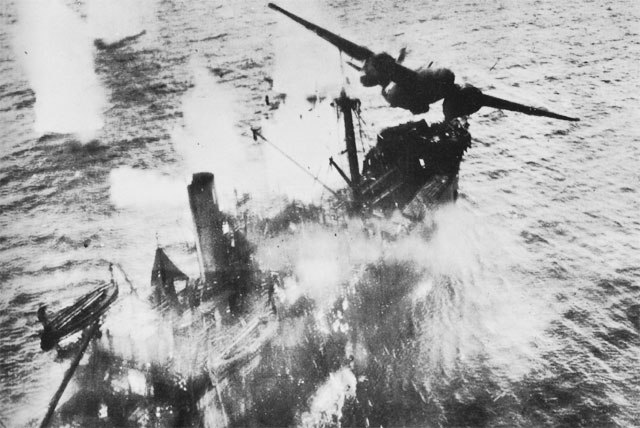The New Guinea campaign of the Pacific War lasted from January 1942 until the end of the war in August 1945. During the initial phase in early 1942, the Empire of Japan invaded the Territory of New Guinea on 23 January and Territory of Papua on 21 July and overran western New Guinea beginning on 29 March. During the second phase, lasting from late 1942 until the Japanese surrender, the Allies—consisting primarily of Australian forces—cleared the Japanese first from Papua, then New Guinea, and finally from the Dutch colony.
Australian forces attack Japanese positions near Buna
Papua New Guinea, the Bismarcks and the Northern Solomons
Two dead Japanese soldiers in a water filled shell hole somewhere in New Guinea
An Allied A-20 bomber attacks Japanese shipping during the Battle of the Bismarck Sea, March, 1943
The Territory of New Guinea was an Australian-administered League of Nations and then United Nations trust territory on the island of New Guinea from 1914 until 1975. In 1949, the Territory and the Territory of Papua were established in an administrative union by the name of the Territory of Papua and New Guinea. That administrative union was renamed as Papua New Guinea in 1971. Notwithstanding that it was part of an administrative union, the Territory of New Guinea at all times retained a distinct legal status and identity until the advent of the Independent State of Papua New Guinea.
1936 silver shilling of the TNG, with native designs on reverse
Australian soldier, Private George "Dick" Whittington, being aided by Papuan orderly Raphael Oimbari near Buna on 25 December 1942






